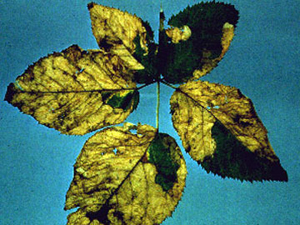Several insects feed on leaves of raspberries, and their feeding patterns are distinctive. These include:
Raspberry leaves are a favorite food of Japanese beetles.
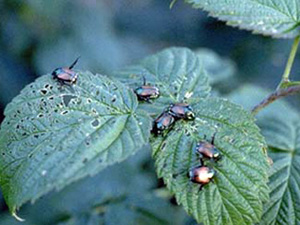
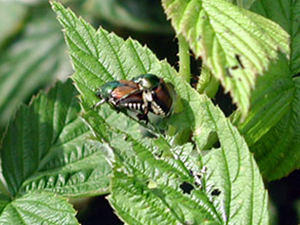

More raspberry Japanese Beetles (White Grubs) information
Raspberry fruitworm (Byturus unicolor) prefers red and purple raspberries. Fruitworm adults limit their feeding to between the veins, skeletonizing unfolding leaves.
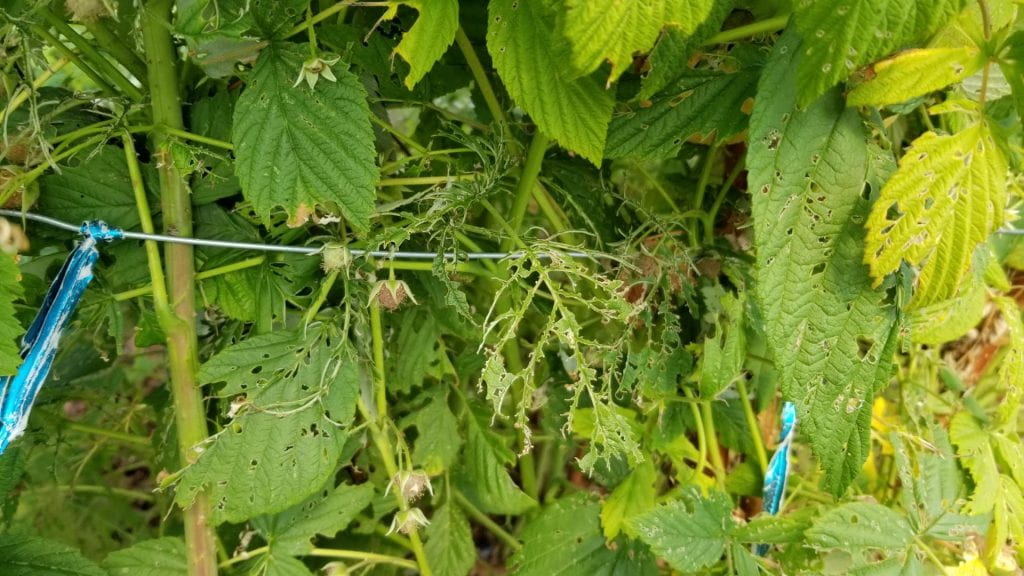
Adults also feed on buds, and open flowers but the damage is usually minimal. Eggs are deposited on swollen unopened flower buds, inside buds or on developing fruit.

Larva hatch and bore into the receptacle tissue. When harvest fruit is picked larva often remain attached to the cup-like interior of the fruit and become a contaminant to harvested berries.

More raspberry fruitworm information
Raspberry Sawfly (Monophanoides geniculatus) larvae can be very damaging to raspberry leaves. On rare occasions of heavy infection, only the larger veins remain uneaten.
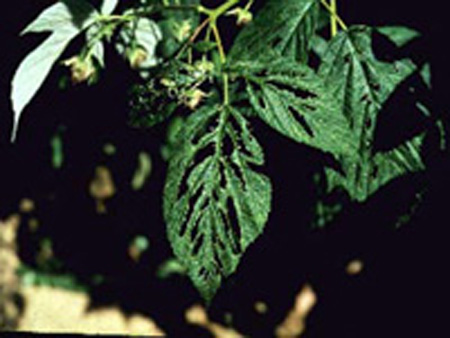
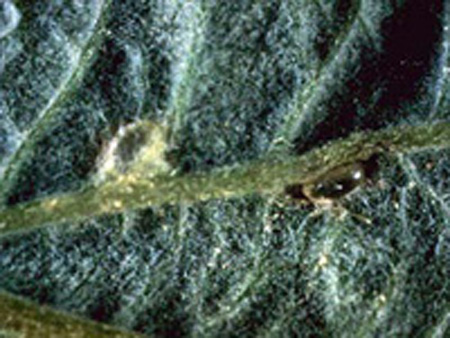

More raspberry sawfly information
Leafminers affect blackberries more than raspberries. They also belong to the sawfly family. Leafminers will consume tender inner-leaf tissue. Damage is most visible when leaves are held up against the light.

